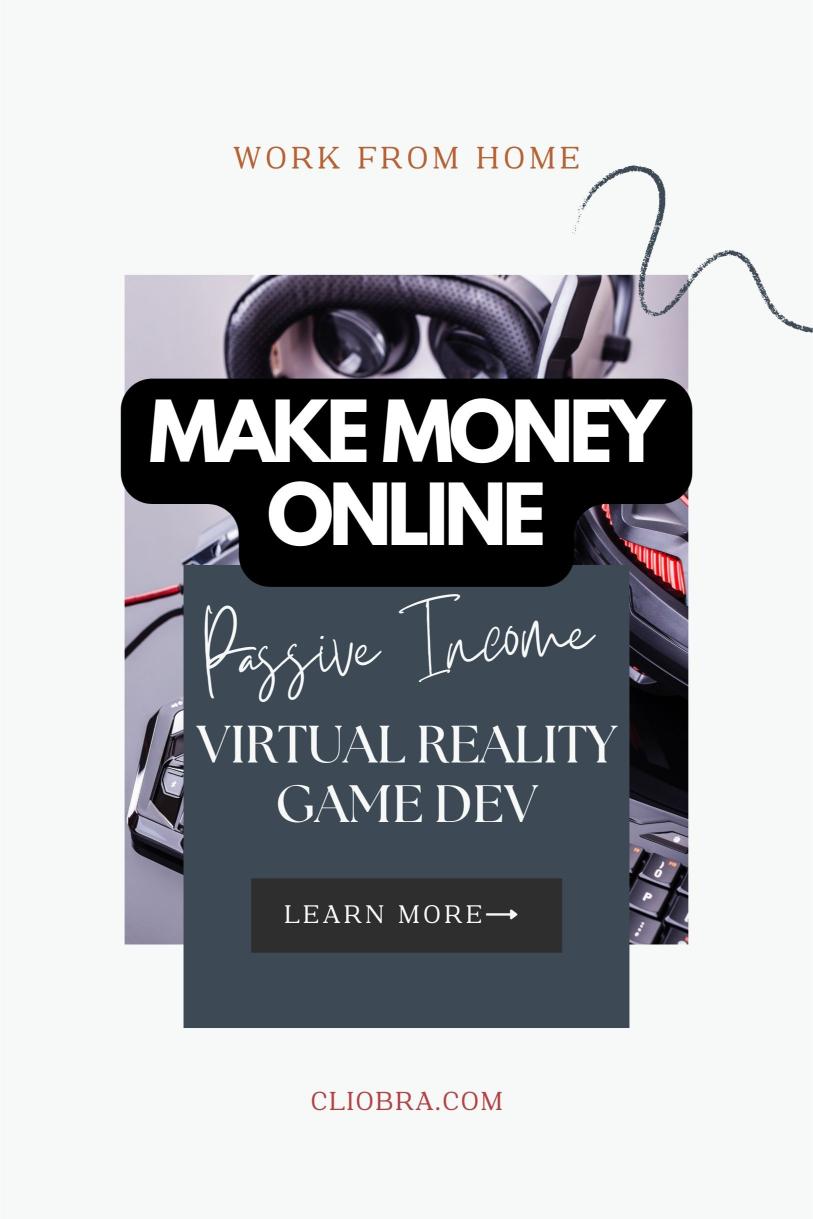Last Updated on October 23, 2024 by Arif Chowdhury
Ever dreamed of making money while you sleep?
Thought about tapping into the booming world of virtual reality?
Well, buckle up, because we’re about to dive into the goldmine that is passive income through VR game development.
The VR Gold Rush: Why Now’s the Time to Jump In
Let’s face it, virtual reality isn’t just for tech geeks anymore.
It’s blowing up, and the numbers don’t lie.
According to Statista, the global VR market is expected to reach a whopping $84.09 billion by 2028.
That’s not just growth, that’s a freakin’ explosion.
And guess what? There’s still plenty of room for newcomers to stake their claim.
From Zero to VR Hero: Getting Started
Now, I know what you’re thinking.
“I’m not a coding wizard or a graphics guru. How the hell am I supposed to make VR games?”
Here’s the secret: You don’t need to be.
Modern game engines and VR development tools have made it easier than ever to create immersive experiences.
Here’s how to get started:
- Pick your poison: Unity or Unreal Engine
- Dive into online tutorials (YouTube is your new best friend)
- Join VR dev communities for support and inspiration
- Start small, think big
The Passive Income Playbook
Alright, let’s talk money.
How exactly does VR game development translate to passive income?
Here’s the breakdown:
- Create once, sell forever: Unlike traditional jobs, you build a game once and can sell it indefinitely
- Multiple revenue streams: In-app purchases, ads, licensing, and more
- Scalability: As your skills grow, so does your potential income
Niche Down to Cash Up
Here’s where the real money’s at: niche markets.
Don’t try to be the next Beat Saber right out of the gate.
Instead, focus on underserved markets:
- Educational VR experiences for schools
- Corporate training simulations
- Niche hobby simulators (think: advanced knitting in VR)
The more specific, the less competition, the higher the potential profits.
Monetization Mastery: Beyond the Price Tag
Selling your game is just the beginning.
To really rake in the passive income, you need to think beyond the initial purchase.
Consider these strategies:
- In-app purchases: Cosmetic items, power-ups, or additional levels
- Subscription models: Regular content updates for a monthly fee
- Advertising: Partner with brands for in-game ads (but keep it classy)
- Licensing: Allow other developers to use your assets or technology
The Power of Community
Building a loyal community around your VR games isn’t just good for the ego—it’s good for the bank account.
Engage with your players through:
- Discord servers
- Regular dev logs
- Beta testing programs
A strong community leads to:
- Word-of-mouth marketing (free advertising, baby!)
- Valuable feedback for improvements
- A ready-made audience for your next release
Overcoming the Obstacles
Let’s be real—it’s not all smooth sailing.
VR game development comes with its fair share of challenges:
- Technical hurdles: VR optimization is no joke
- Market saturation: Standing out in a crowded marketplace
- Rapidly evolving technology: Keeping up with the latest VR advancements
But here’s the thing: these obstacles are opportunities in disguise.
Overcome them, and you’ll leave the competition in the dust.
Scaling Your VR Empire
Once you’ve got your first game out there and the passive income is trickling in, it’s time to think bigger.
Here’s how to scale:
- Outsource: Hire freelancers for tasks outside your expertise
- Diversify: Expand into different VR niches or platforms
- Collaborate: Partner with other developers to create bigger, better games
- Reinvest: Use your earnings to fund more ambitious projects
The Future of VR and Your Bank Account
VR isn’t just a passing fad—it’s the future.
With technologies like eye-tracking and haptic feedback on the horizon, the possibilities for innovative games (and profit) are endless.
According to a report by Grand View Research, the VR gaming market is projected to grow at a CAGR of 30.2% from 2021 to 2028.
That’s a lot of potential cash waiting to be claimed.
Your Next Steps
Ready to dive into the world of VR game development and passive income?
Here’s your action plan:
- Choose your game engine and start learning
- Brainstorm unique game ideas that fill a market gap
- Build a minimum viable product (MVP) and gather feedback
- Implement smart monetization strategies
- Foster a community around your game
- Rinse and repeat
Remember, the journey of a thousand miles begins with a single step.
Or in this case, a single line of code.
Conclusion: Your VR Passive Income Adventure Awaits
The world of VR game development is ripe with opportunity for those willing to put in the work.
It’s not a get-rich-quick scheme, but with persistence, creativity, and smart business sense, it can become a powerful source of passive income.
So, what are you waiting for?
The virtual world—and your financial future—are waiting to be shaped by your imagination.
Time to level up your income, one VR game at a time.
